This post may contain affiliate links. Read our disclosure policy.
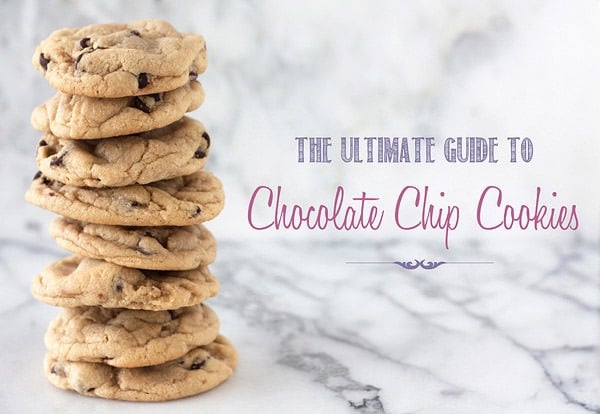
In this post I’m going to share with you how various ingredients and techniques can affect the taste, texture, and appearance of your chocolate chip cookies. This will hopefully help you understand how a Chocolate Chip Cookie Recipe works so you can make the PERFECT batch every time, whatever you consider to be perfect. This information will allow you to alter or create your own chocolate chip recipe that produces cookies just the way YOU like them. You’ll be an expert on the anatomy of the chocolate chip cookie.
I used the Nestle Tollhouse Chocolate Chip Cookie recipe as my control and made little changes and variations in techniques and ingredients to show you how they affect the cookie.
I halved and adapted the original Tollhouse recipe. I kept everything the same through each recipe test, changing just one key thing to see its effect and photographing the results for you.
Cookie Tools and Ingredients Used:
Tools and Ingredients Used (when applicable):
-Spring-Loaded Cookie Scoop (Medium or 1 1/2-Tablespoon size)
–Chicago Metallic sheet pans
–Escali Digital Food Scale
–KitchenAid 5-quart Stand Mixer
–Oven thermometer
–Unbleached parchment paper
-Gold Medal All-Purpose Flour
-Fine sea salt
-Light brown sugar
-Large eggs
-Unsalted butter at a cool room temperature
Control Recipe
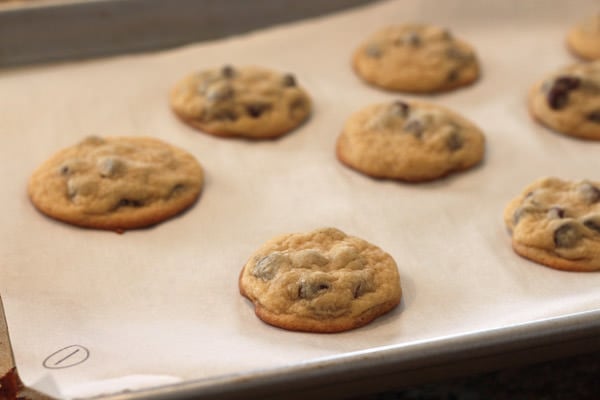
Ingredients:
1 cup plus 2 tablespoons (142 grams) all-purpose flour
1/2 teaspoon baking soda
1/2 teaspoon salt
1 stick (113 grams) unsalted butter, at room temperature
1/4 cup plus 2 tablespoons (75 grams) granulated sugar
1/4 cup plus 2 tablespoons (75 grams) packed light brown sugar
1/2 teaspoon vanilla
1 large egg
1 cup (170 grams) semi sweet chocolate chips
Directions:
Preheat oven to 350°F. Line baking sheets with nonstick baking mats or parchment paper.
In a medium bowl combine the flour, baking soda, and salt.
In the bowl of an electric mixer beat the butter, granulated sugar, and brown sugar until creamy, about 2 minutes. Add the egg and vanilla, beating well to combine. Gradually beat in the flour mixture. Stir in the chocolate chips. Scoop 1 1/2 tablespoon-sized balls and place onto prepared baking sheets.
Bake for 9 to 11 minutes, or until golden brown. Cool for 2 minutes before removing to wire racks to cool completely.
Here is the control, an adapted version of the Nestle Tollhouse recipe. The full recipe I used to base all of the tweaks on is at the bottom of this post.
Baking Powder:
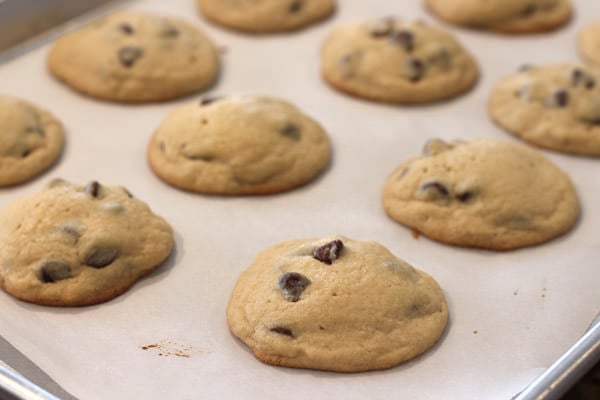
Removed baking soda from recipe and used 1/2 teaspoon baking powder. This produced results that were more cakey and puffed while baking.
Baking Powder AND Baking Soda:
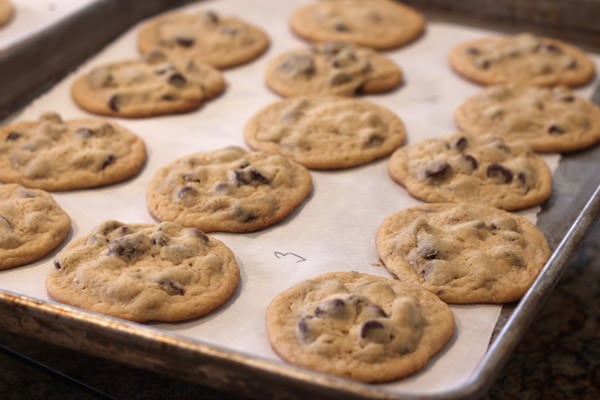
Used 1/4 teaspoon baking powder and 1/4 teaspoon baking soda. This produced results that were crisp at the edges, soft in the middle, with a good amount of spread. The combination of the two leaveners produced the best results in my opinion.
MORE Flour:
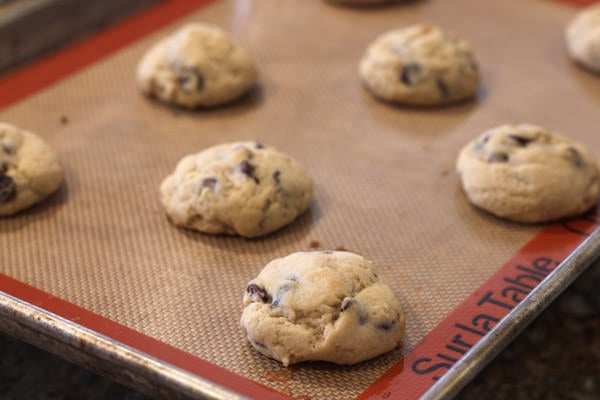
Increased the flour to 2 cups (250 grams) which created a more crumbly dough and very little spread. The cookies were small yet thick and relatively undercooked (ooey and gooey) in the middle.
MELTED Butter:
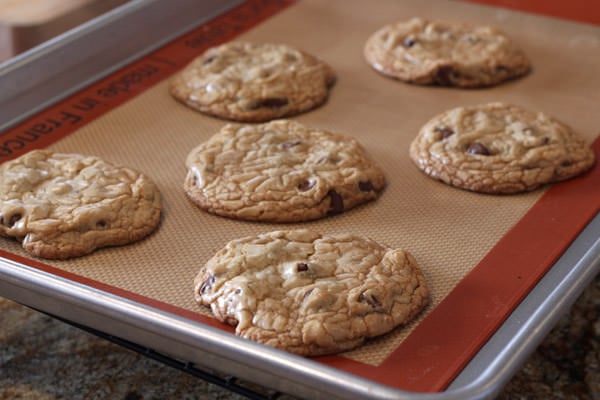
I replaced the room temperature butter with melted and cooled butter. Instead of creaming the butter and sugar with an electric mixer, I simply stirred the butter and sugars together then let sit for 5 minutes, until the sugar was better absorbed by the butter. This produced flatter cookies that had a shiny, crackled top reminiscent of brownies. They were also more crisp at the edges.
All Granulated Sugar:
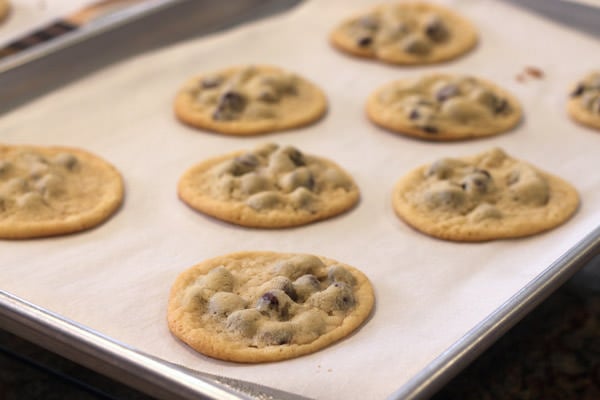
I used 3/4 cup granulated sugar (150 grams) in this recipe which produced flat, white, chewy, and slightly crunchy cookies but with little flavor. Since baking soda (called for in the control recipe) requires an acid (such as brown sugar) to react, these cookies fell very flat as you can see by the way the chocolate chips protrude.
All Brown Sugar:
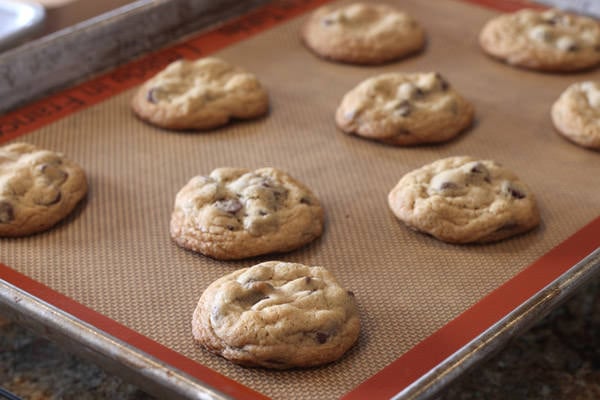
I used 3/4 cup (150 grams) packed light brown sugar in this recipe which produced thick, brown, and soft cookies with an intense butterscotch flavor. The original control recipe uses an even ratio of granulated and brown sugars. If you prefer your cookies to be flatter, chewier, or crisper, use more granulated sugar. If you prefer your cookies to be softer and thicker and have a pronounced butterscotch flavor, use more brown sugar.
24-hour CHILLED Dough:
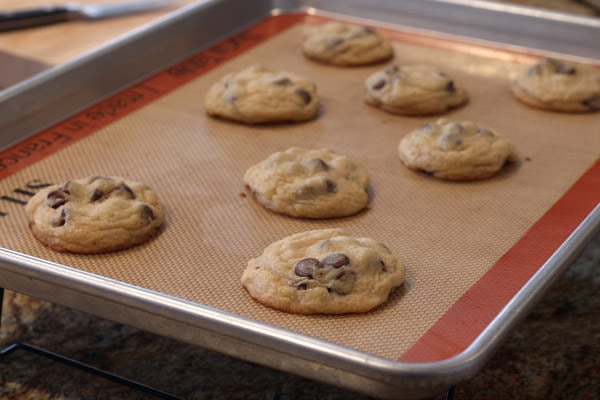
I used the control recipe but chilled it in the fridge for about 24 hours before shaping and baking. This produced cookies that were slightly thicker, chewier, darker, and with a better depth of butterscotch flavor. If you have time, try chilling your next cookie dough for at least 24 hours, or up to 48 hours.
Final Comparison:
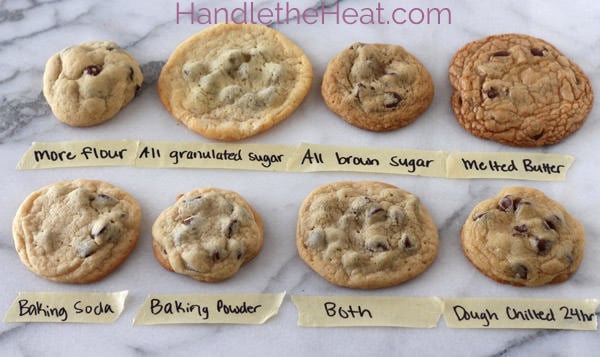
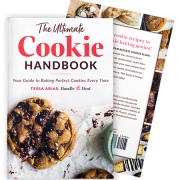
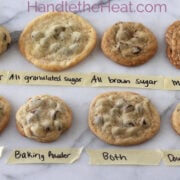
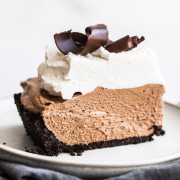
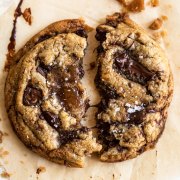

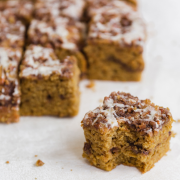
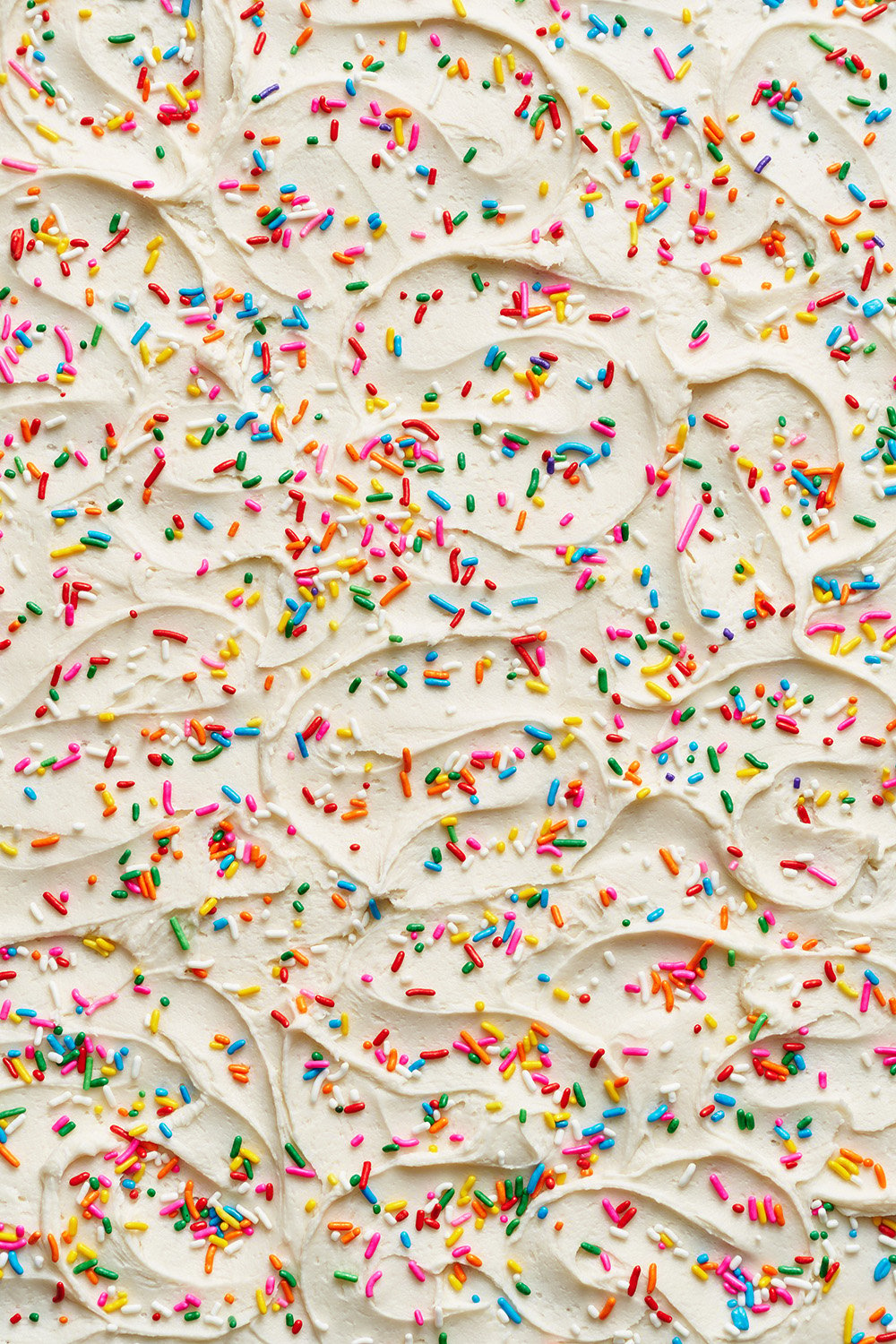
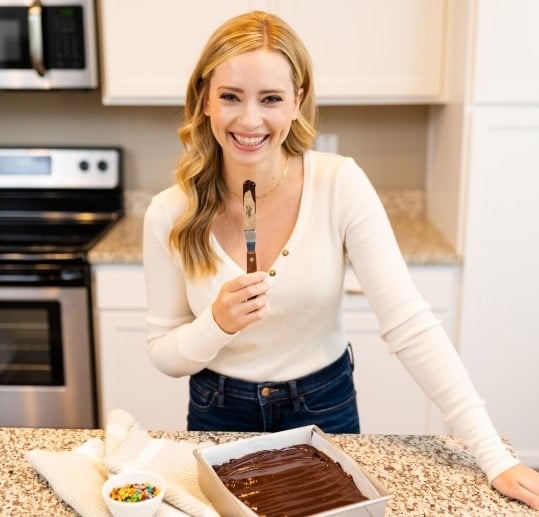
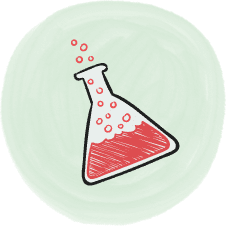
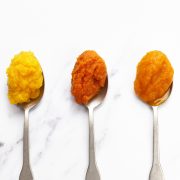
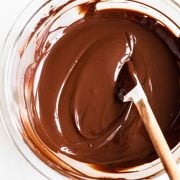
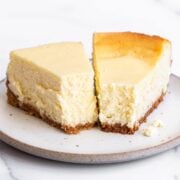
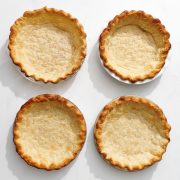








Wow! Thanks for all the work you put into this. I’d like to see the results with a sugar cookie recipe. I like thick, chewy cookies that slightly crack. Almost the consistency of a molasses cookie. I have only had them one time and have never been able to duplicate them. Thanks!
As a high school culinary arts teacher I have used something very similar to this to introduce the functions of ingredients in baking. This is an excellent update to what I have used. Thanks so much!
Thank you for the information. Alton Brown on the Food Network did something like this. He made three batches. “The Chewy” one is what we like. I will have to try the cornstarch option.
Can not wait to try these ideas! Thank you for doing the hard work!
hi,
i want to try the butter recipe but am a bit confused of the process regarding using the hand mixer.
after melting butter+sugar, how do i continue?
hand mix the egg?
than hand mix the flour mixture?
or just stirring by hand?
many thanx for this wonderful project (-:
dana
What a great post!! this is a great way to get home made cookies to turn out exactly how you want.. I will be using this to help me perfectt my home made cookies! thank you!
Hey, I would love to try this out. What about using oil?
Have you tried using margarine v. butter? We never have butter on hand and they always seems to turn out a little but different.
I wasn’t able to read all the comments, so I apologize if this was already asked! I was wondering if you tried combining all of the different tests for one recipe? For example, using both baking soda and powder, part melted butter, part room temp, a little more flour, equal parts brown/white sugar, plus chilling the dough… Wonder how those cookies would turn out?!! I might have to try it bc I’m just too curious not too :). Thanks for sharing this!!
Great post!! I am always searching for my perfect chocolate chip cookie recipe! I will definitely use this as a guide for fine tuning my results. I only wish I would have been in your house when you were making all of these batches to help with the taste testing!!!!
Hey! To the one asking about High Altitude. I am from Breckenridge, CO which is at 9,600ft. My house is actually at about 10,000ft. I use the high altitude baking directions on the Toll House Chocolate Chip Cookie Bag and it works perfectly! They are very tasty.
Wow – LOTS of comments on your experiment. Jeffrey Steingarten would be proud of your effort. 🙂
Several things (that I see you’ve addressed somewhat already in previous posts):
– I would have preferred that you also included weights for your volumes (along with the requisite “cups”, etc.)
– I also would have liked for you to include the parenthetical notes for how your experiments differed from your control batch (so as to allow me to be lazy and not have to keep scrolling up and down).
– I’d love to see you add “less sugar” and “less butter” to your experiments. My wife is always experimenting with “healthier” chocolate chip cookies and usually just ends up putting less sugar/butter in the Neiman Marcus cookie recipe…with varying levels of success.
All the best.
PS: I couldn’t figure out why you wanted our “Mail” above…should read “Email”, though. 🙂